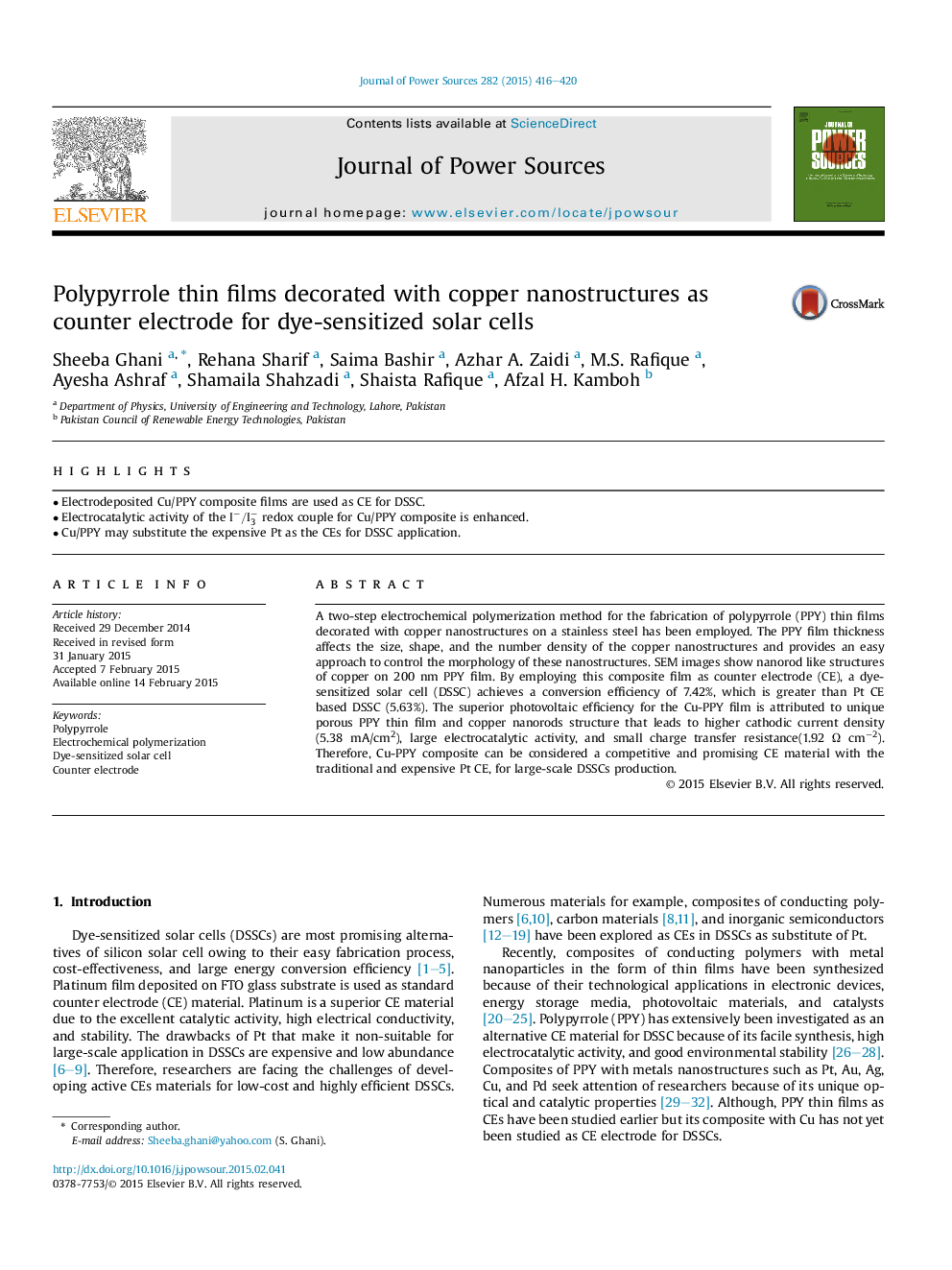| Article ID | Journal | Published Year | Pages | File Type |
|---|---|---|---|---|
| 7733585 | Journal of Power Sources | 2015 | 5 Pages |
Abstract
A two-step electrochemical polymerization method for the fabrication of polypyrrole (PPY) thin films decorated with copper nanostructures on a stainless steel has been employed. The PPY film thickness affects the size, shape, and the number density of the copper nanostructures and provides an easy approach to control the morphology of these nanostructures. SEM images show nanorod like structures of copper on 200 nm PPY film. By employing this composite film as counter electrode (CE), a dye-sensitized solar cell (DSSC) achieves a conversion efficiency of 7.42%, which is greater than Pt CE based DSSC (5.63%). The superior photovoltaic efficiency for the Cu-PPY film is attributed to unique porous PPY thin film and copper nanorods structure that leads to higher cathodic current density (5.38 mA/cm2), large electrocatalytic activity, and small charge transfer resistance(1.92 Ω cmâ2). Therefore, Cu-PPY composite can be considered a competitive and promising CE material with the traditional and expensive Pt CE, for large-scale DSSCs production.
Related Topics
Physical Sciences and Engineering
Chemistry
Electrochemistry
Authors
Sheeba Ghani, Rehana Sharif, Saima Bashir, Azhar A. Zaidi, M.S. Rafique, Ayesha Ashraf, Shamaila Shahzadi, Shaista Rafique, Afzal H. Kamboh,
